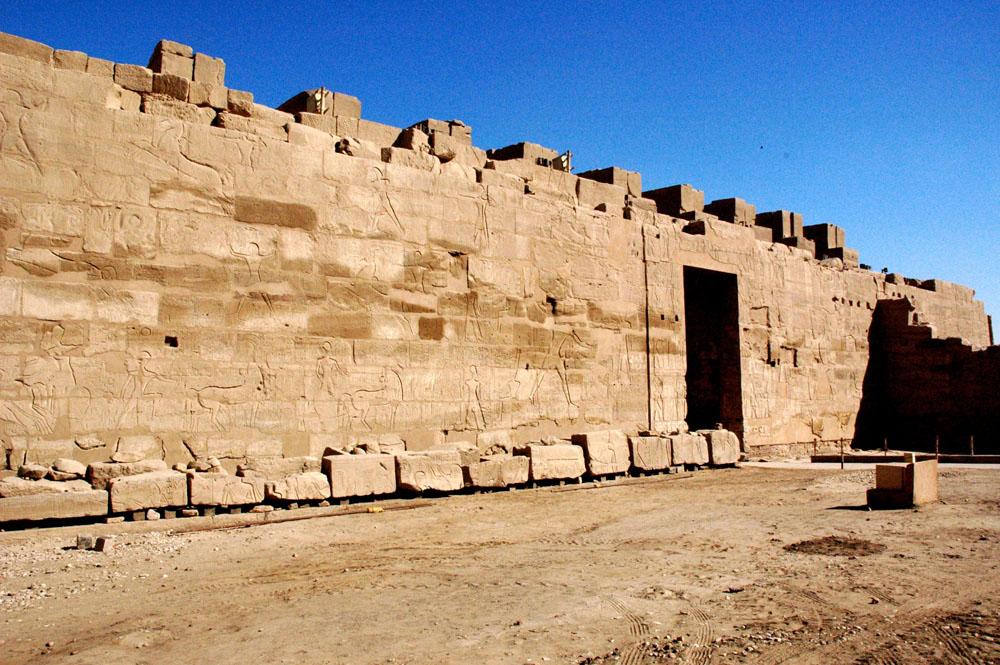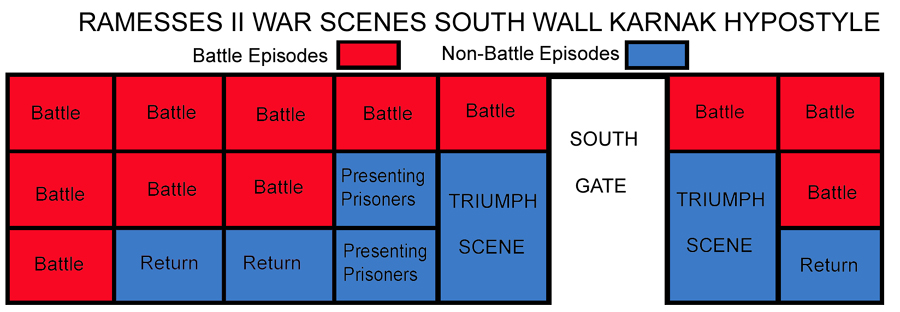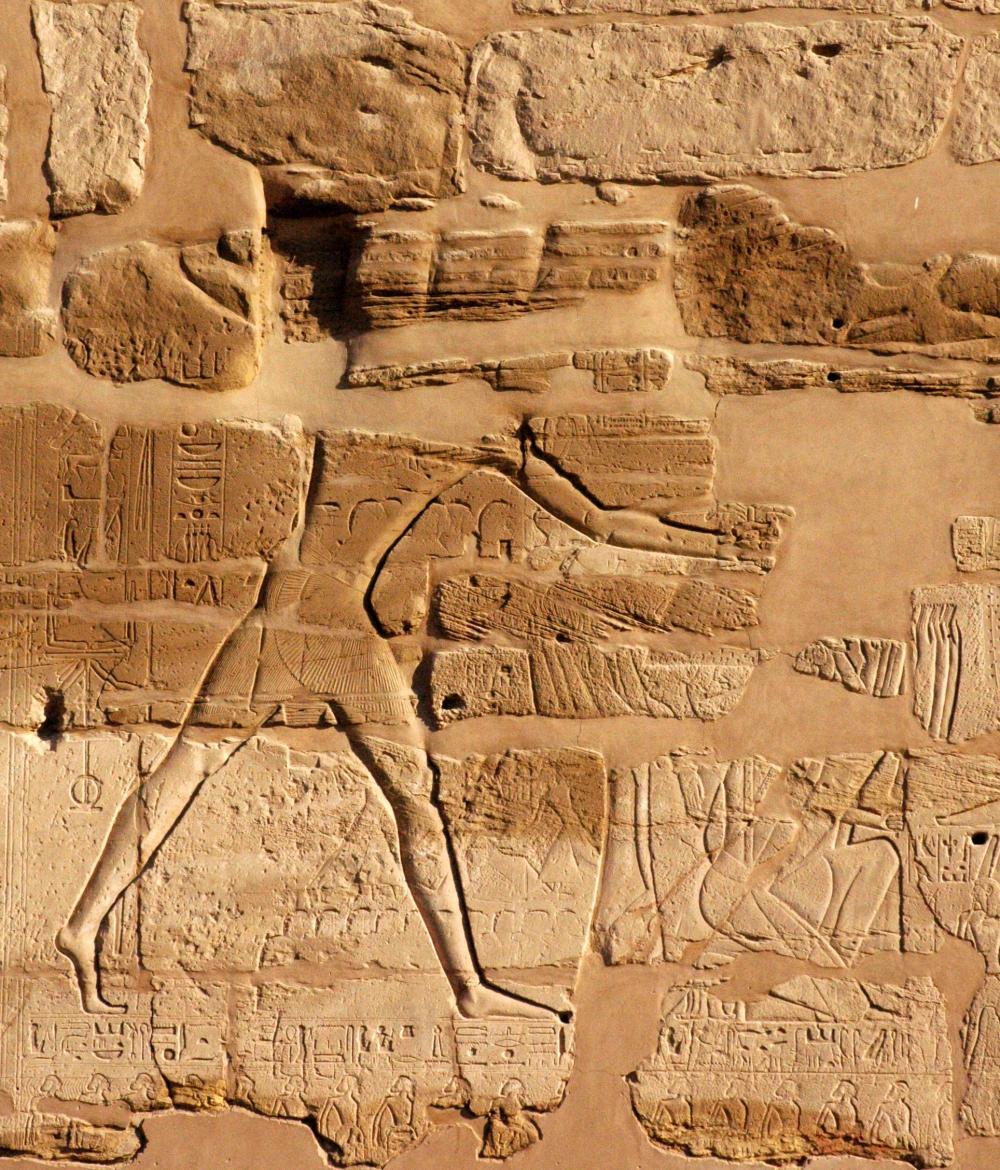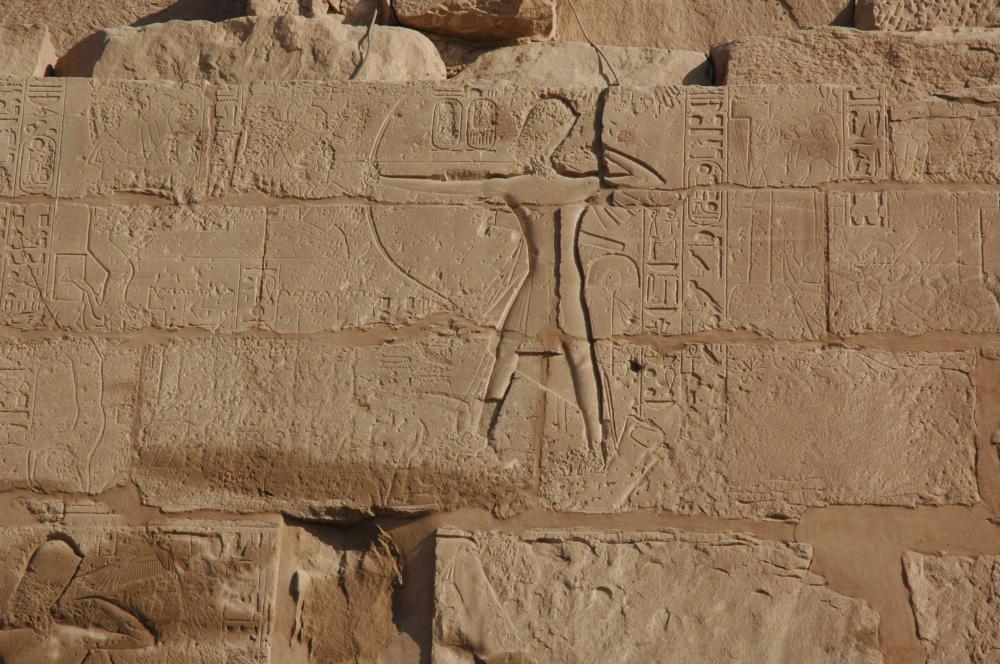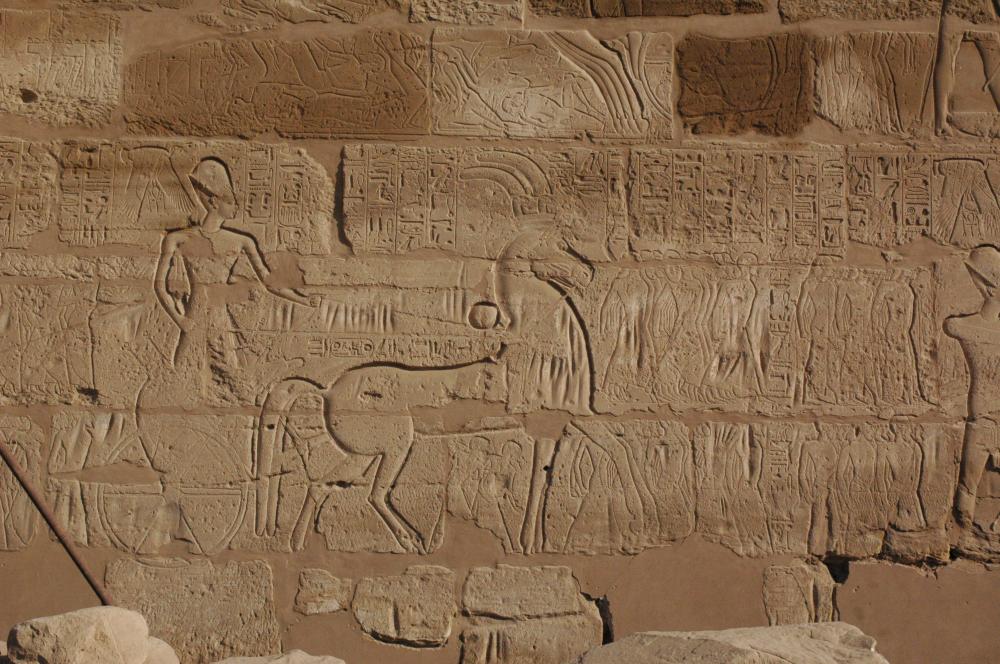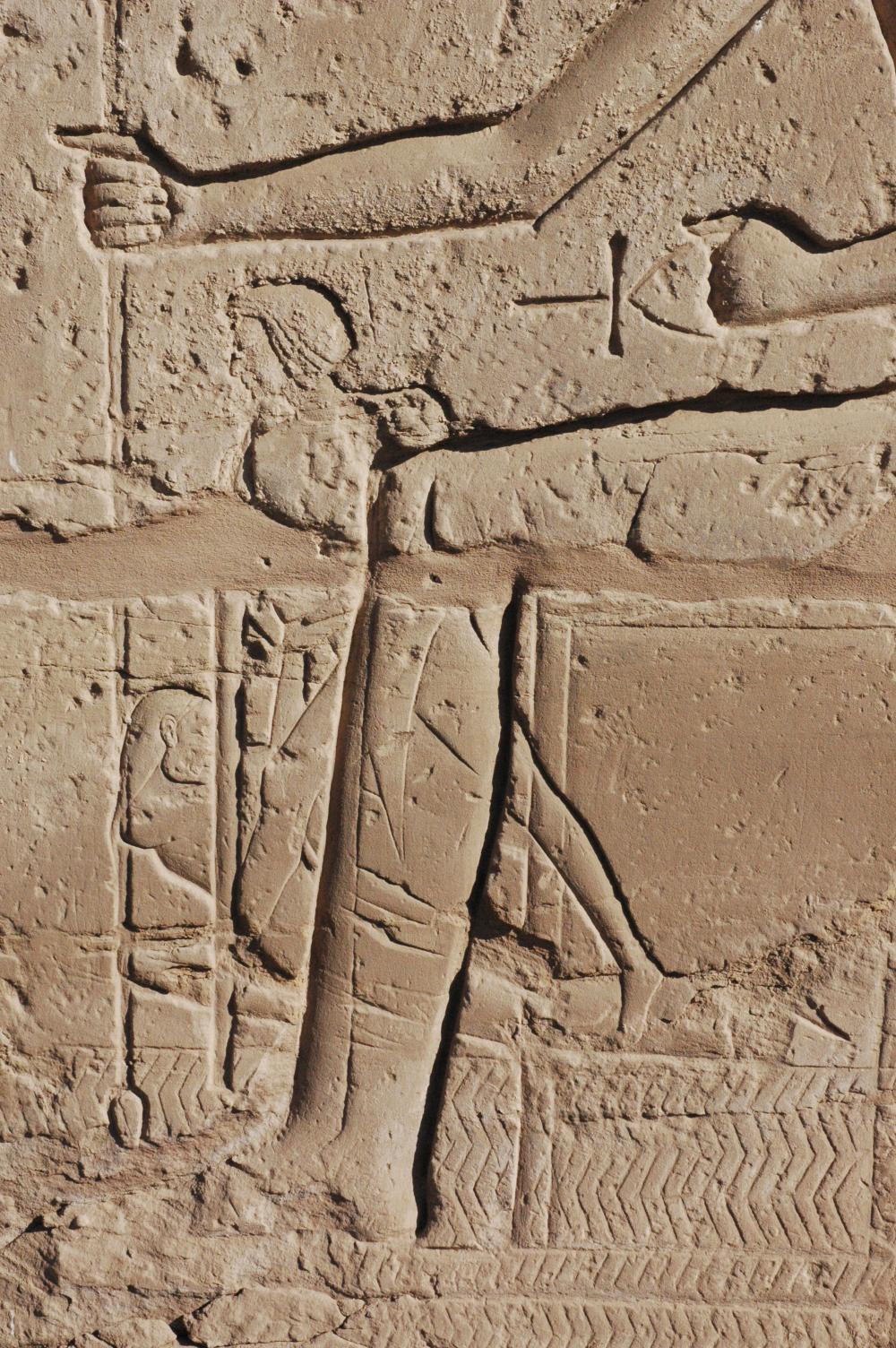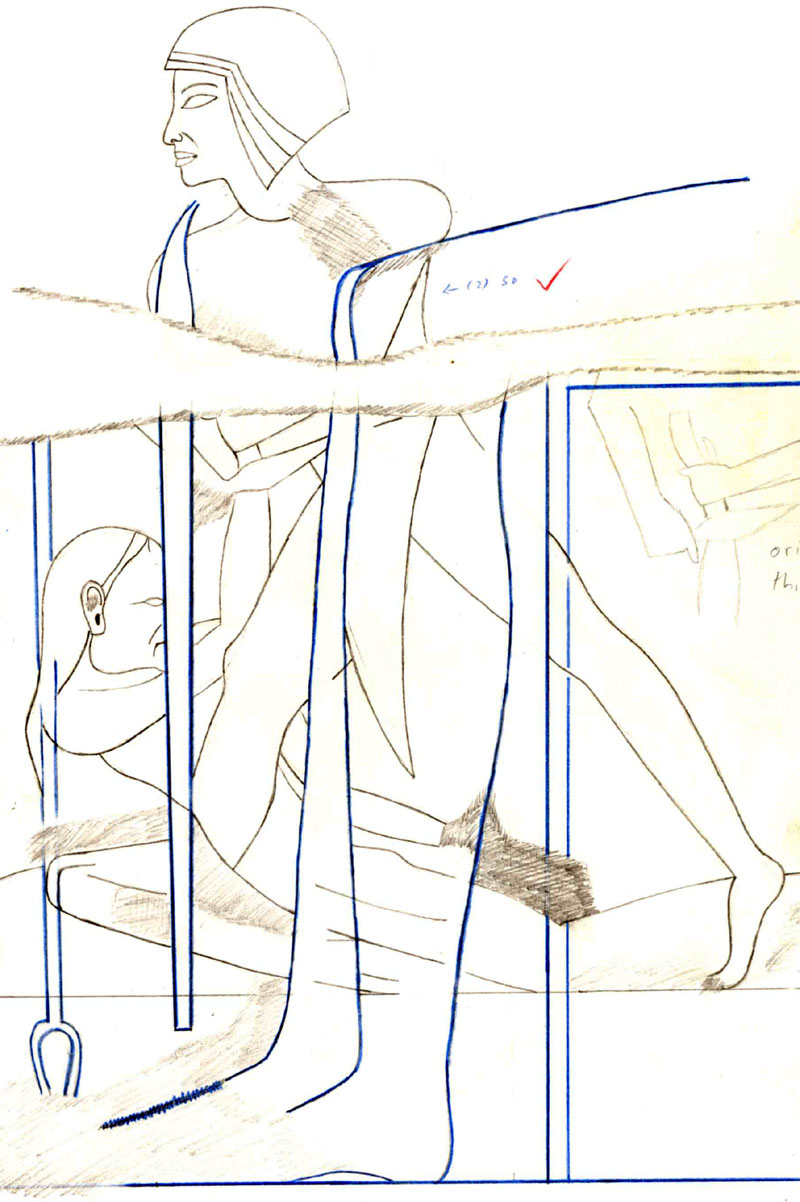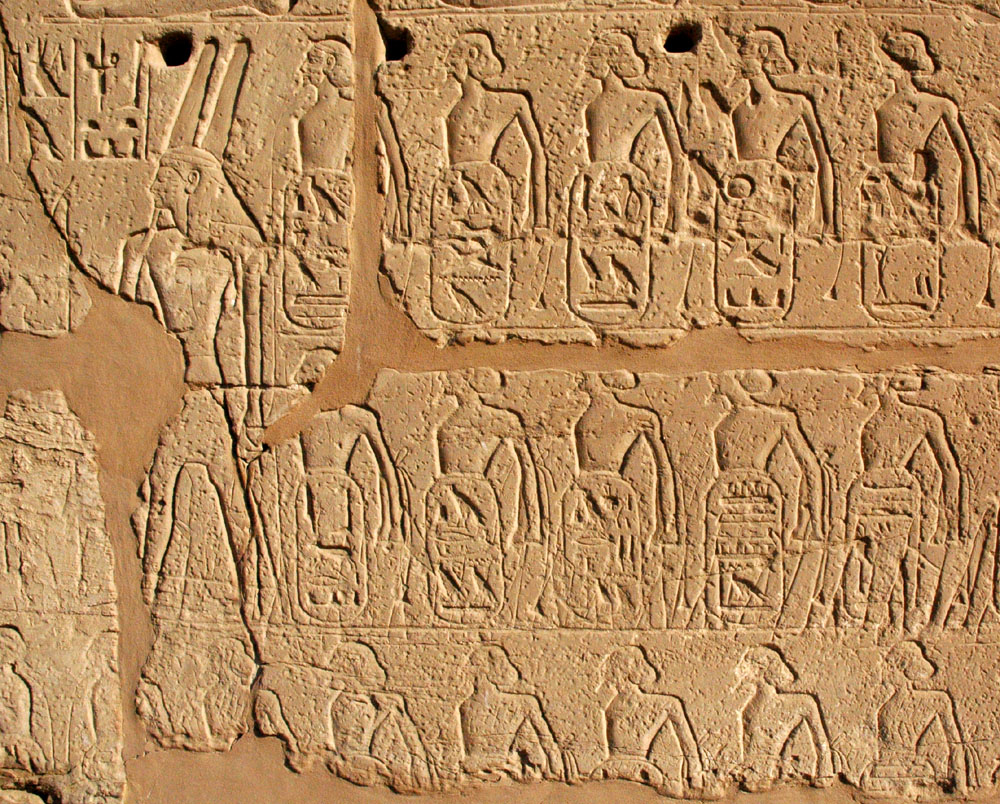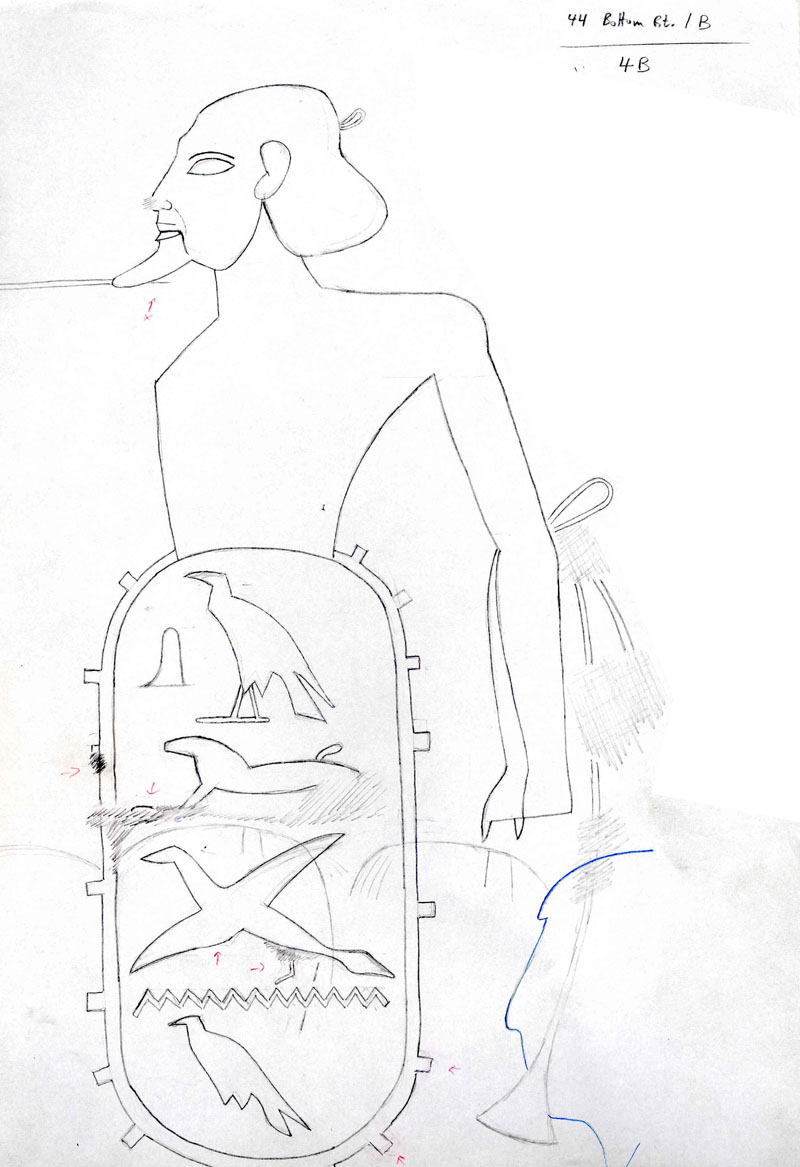War Scenes of Ramesses II
|
Ramesses II is perhaps best known for the battle of Kadesh fought against the Hittite Empire over the city of Kadesh in Syria. Although a military failure, Kadesh was a propaganda victory for Ramesses, and he displayed this "victory" prominently on the walls of several temples throughout Egypt. The Karnak Hypostyle Hall was intended as one of the venues for his Kadesh narrative of texts and war scenes, but before work was finished, pharaoh changed his mind and had scenes of his later wars in Syria and Palestine carved over top of the incomplete Kadesh scenes.
Ramesses II campaigned in Palestine and Syria for the next fifteen years after Kadesh and also commemorated these wars with panoramic war scenes on several temples including the Hypostyle Hall. Egyptologists have not been as interested in these later war scenes, so that the later part of Ramesses' career as a warrior is poorly understood.
One reason for this scholarly neglect is that the scenes and text themselves are not as interesting as the unique Kadesh record. Another problem with Ramesses II's battle scenes on the Karnak Hypostyle Hall is the erosion and random damage they have received over the centuries, making them hard to read.
In some places on the wall, these later war scenes were carved over the Battle of Kadesh inscriptions. The Kadesh reliefs were not completely erased however. Plaster was used to cover them. After 1300 years, the plaster is almost gone, leaving the two versions to be read-- with difficulty.
This double set of inscriptions is called a palimpsest and is difficult to untangle. Damage to the reliefs makes this even more difficult. After weeks of tedious work, we were able to make some minor discoveries. The Kadesh palimpsest includes part of a text known as the "Bulletin." Although better preserved elsewhere in several copies, the Karnak version included some variant phrases not found elsewhere.
Our study and recording of these later war scenes is also aimed at discovering some of the names of places Ramesses II fought against. Two lists of place names are given in giant triumph scenes on either side of the south gateway. Parts of these were copied from earlier lists, others are original. All of them are damaged however. We also hope to recover the names of the towns shown in the battle scenes themselves. These are inscribed on the forts Ramesses attacks, but most are damaged and have never been read. Many of these inscriptions are several meters off the ground and have never been looked at closely. By careful study of these reliefs, we hope to achieve a better understanding of Ramesses II's wars in Western Asia. We will publish the war scenes in facsimile drawings which are easier to read than photographs of these badly damaged scenes.
|

